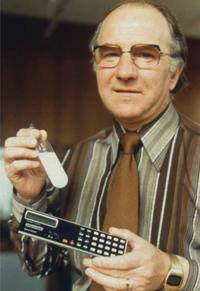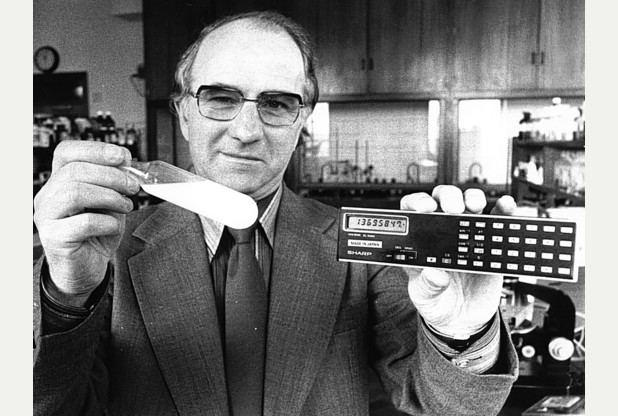 | |
| Born | 4 September 1926 Denny Scotland |
| Died | 12 May 2013 | Age 86 |
Liquid Crystal Display
Contents Liquid Crystal Display George Gray 1972 Re-invent the Display Background Cyanobiphenyl Compounds Turning Point Awards Links
George Gray 1972
George William Gray was born in Denny, Scotland 4 September 1926.
In 1972 a team led by George Gray at the Royal Radar Establishment developed a new type of cyanobiphenyl. This resulting liquid crystal was less viscous, thereby providing faster response times and more transparent, which produced a pure-white colour display for the first time.
Re-invent the Display

John Stonehouse, who was the Minister of Technology, put out a challenge to find an alternative to the shadow mask colour TV tube.
This challenge was taken up by Cyril Hilsum at the Royal Radar Establishment (RRE) in Malvern Worcestershire, to explore whether the discovery by US researchers that a thin layer of impure liquid crystal could be used to make a crude optoelectronic display but the DSM design worked poorly and proved to be too power hungry.
Concurrently, in 1971, researchers in Switzerland had discovered a new display mechanism, the Twisted Nematic effect. This was a pure field-effect and did not require the presence of impurities, and George focused on finding new materials for this.
Background
The liquid crystal materials known then had to be heated to 70ºC or more, usually decomposed in a few minutes and were rather viscous, which made their response sluggish. Invariably they comprised two benzene rings joined by a double, or triple, bond linkage that was easily broken by photolysis or hydrolysis.
George’s defining achievement was to use his deep knowledge and long experience of liquid crystals to eliminate this linkage entirely and to synthesise a number of biphenyl molecules, with a cyano group at one end, two directly coupled benzene rings in the middle and an alkyl chain of a defined length at the other.
Cyanobiphenyl Compounds
Three of these cyanobiphenyl compounds were liquid crystalline over a narrow interval at around room temperature and these were revealed to the world 52 years ago in a scientific publication on 22 March 1973. Working in collaboration with scientists at the RRE, led by Peter Raynes, further compounds were synthesised and evaluated.These cyanobiphenyl compounds had a low viscosity, proved extremely stable (as George had predicted) and, formulated as eutectic mixtures, they could remain liquid crystalline from -10ºC to +60ºC.
These were patented and subsequently licensed by the MOD, through the aegis of Cyril Hilsum, since the university baulked at the costs and risks involved. They were then published in the peer reviewed scientific literature. In 1990 Gray moved to Merck Chemicals.
Turning Point
This turned the field of research on LCDs into an expanding international activity, with adequate supplies of the materials being available, under licence, from Merck Ltd (then BDH Ltd), due to the foresight of Ben Sturgeon, their Research Director.Many companies exploited George’s materials in their LCDs, the most successful being large Japanese corporations.

Awards
Gray was the recipient of the 1995 Kyoto Prize for Advanced Technology, often referred to as the Japanese Nobel Prize.Links
http://www.merck.co.uk/
https://www.royalsoced.org.uk/cms/files/fellows/obits_alpha/gray_gw.pdf


